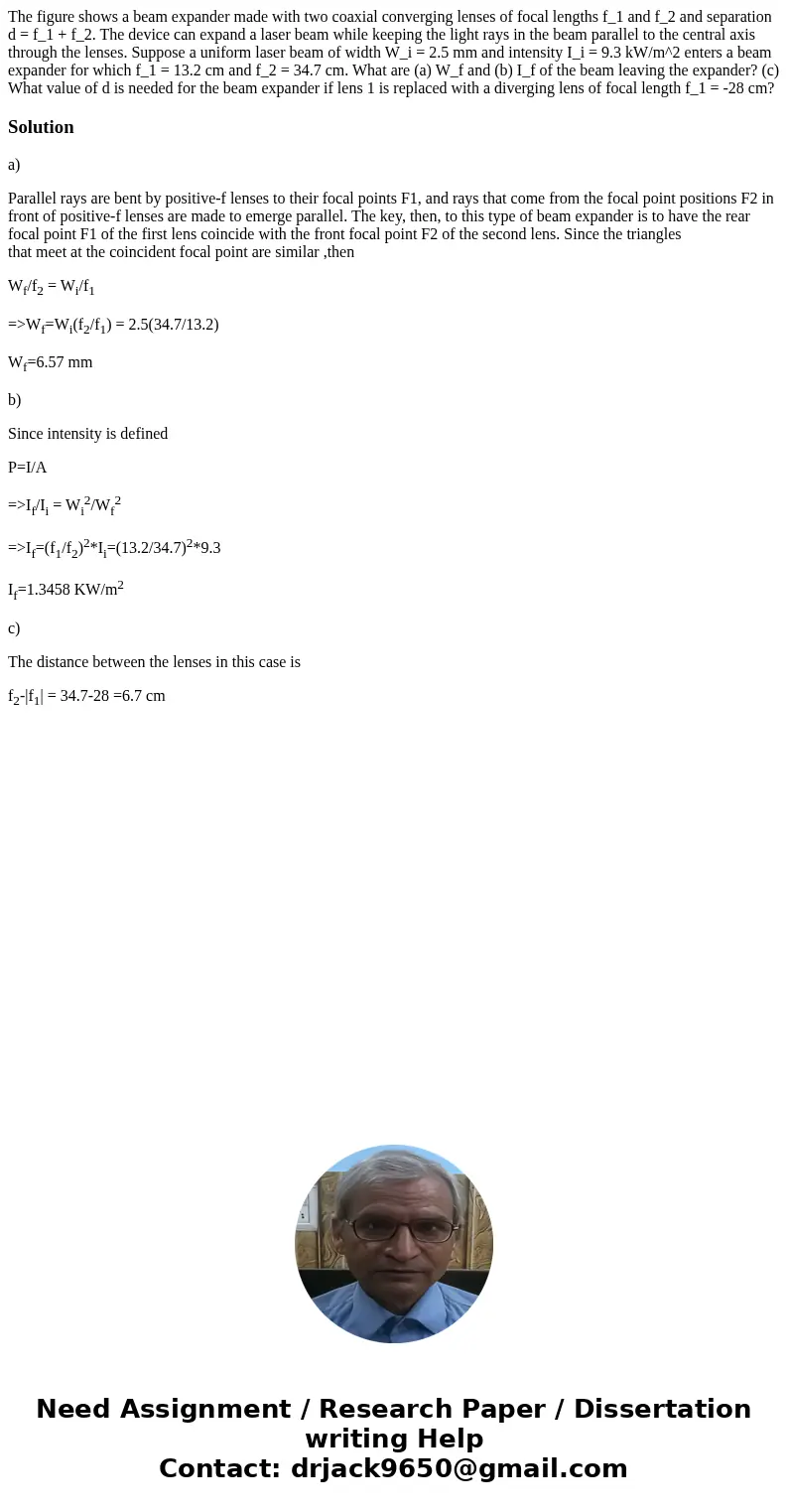The figure shows a beam expander made with two coaxial conve
The figure shows a beam expander made with two coaxial converging lenses of focal lengths f_1 and f_2 and separation d = f_1 + f_2. The device can expand a laser beam while keeping the light rays in the beam parallel to the central axis through the lenses. Suppose a uniform laser beam of width W_i = 2.5 mm and intensity I_i = 9.3 kW/m^2 enters a beam expander for which f_1 = 13.2 cm and f_2 = 34.7 cm. What are (a) W_f and (b) I_f of the beam leaving the expander? (c) What value of d is needed for the beam expander if lens 1 is replaced with a diverging lens of focal length f_1 = -28 cm? 
Solution
a)
Parallel rays are bent by positive-f lenses to their focal points F1, and rays that come from the focal point positions F2 in front of positive-f lenses are made to emerge parallel. The key, then, to this type of beam expander is to have the rear focal point F1 of the first lens coincide with the front focal point F2 of the second lens. Since the triangles
that meet at the coincident focal point are similar ,then
Wf/f2 = Wi/f1
=>Wf=Wi(f2/f1) = 2.5(34.7/13.2)
Wf=6.57 mm
b)
Since intensity is defined
P=I/A
=>If/Ii = Wi2/Wf2
=>If=(f1/f2)2*Ii=(13.2/34.7)2*9.3
If=1.3458 KW/m2
c)
The distance between the lenses in this case is
f2-|f1| = 34.7-28 =6.7 cm

 Homework Sourse
Homework Sourse